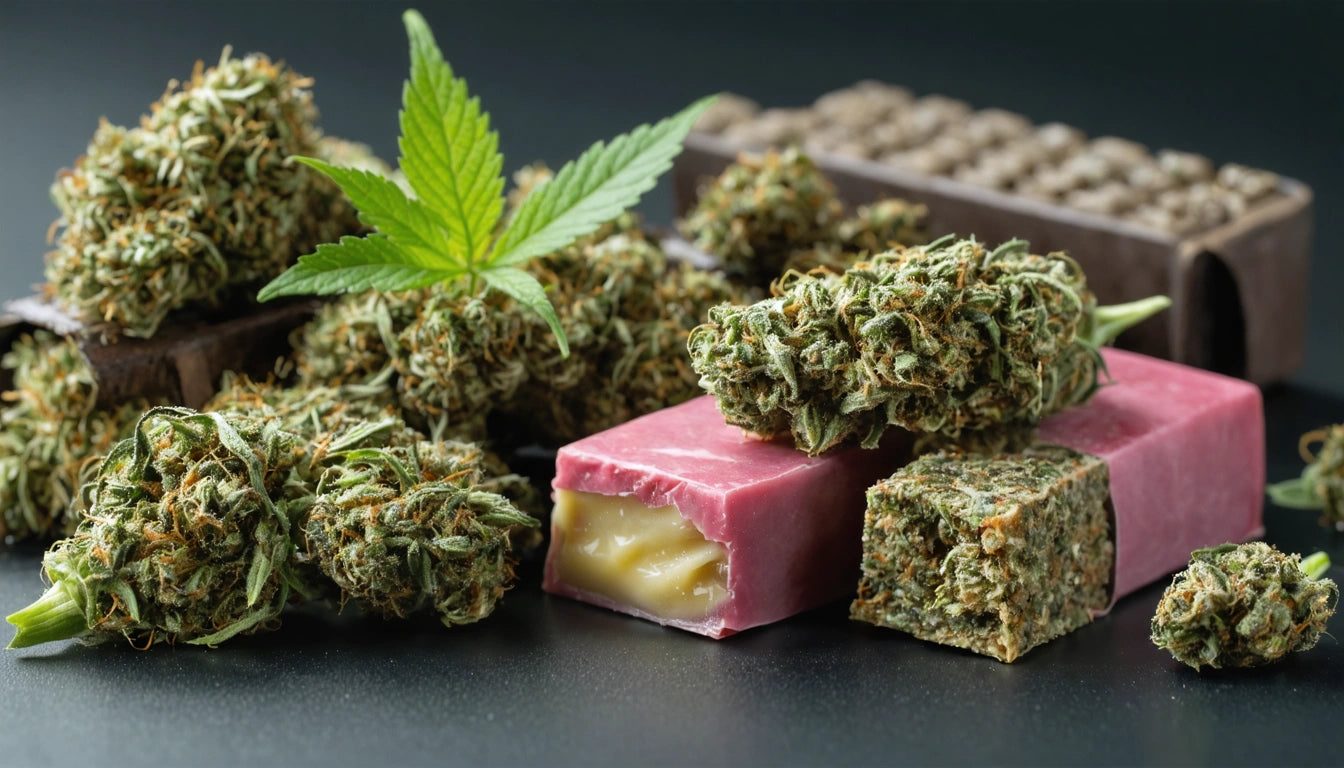Table of Contents
- What is Solvent Extraction in Cannabis Processing?
- CO2 Extraction Method: Process, Benefits and Limitations
- Butane Extraction Method: Process, Benefits and Limitations
- Key Comparison Factors Between CO2 and Butane Methods
- Safety Considerations and Best Practices
- Industry Trends and Future of Extraction Technology
Understanding Solvent Extraction: Comparing CO2 and Butane Methods
nnCannabis extraction methods have evolved significantly as the industry has matured, with solvent-based techniques becoming standard for commercial concentrate production. Among these, CO2 and butane extraction represent two distinct approaches with different benefits, risks, and end products. Understanding what is solvent extraction and the differences between these methods helps producers make informed decisions about their manufacturing processes.
nnWhat is Solvent Extraction in Cannabis Processing?
nnSolvent extraction is a process that uses chemical substances to separate cannabinoids and terpenes from plant material. An extraction solvent works by dissolving the desired compounds, allowing them to be separated from unwanted plant matter. This creates concentrated forms of cannabis that can be further refined into various products.
nnUnlike solventless methods that use mechanical or physical processes, solvent extraction relies on chemical interactions. The choice of solvent significantly impacts the extraction's efficiency, safety profile, and end product characteristics.
nnCO2 Extraction Method: Process, Benefits and Limitations
nnHow CO2 Extraction Works
nnCO2 extraction uses carbon dioxide in a supercritical state, where it has properties of both a liquid and a gas. This state is achieved through precise pressure and temperature control, allowing the CO2 to act as a highly efficient solvent that selectively pulls cannabinoids and terpenes from plant material.
nnThe process typically involves:
nn- n
- Pressurizing CO2 into its supercritical state n
- Passing the supercritical CO2 through cannabis material n
- Collecting the extract in separator vessels n
- Allowing the CO2 to return to gas form and be recycled n
Advantages of CO2 Extraction
nnCO2 extraction offers several significant benefits:
nn- n
- Exceptional purity with minimal residual solvent n
- Tunable parameters for targeting specific compounds n
- Non-flammable and environmentally friendly n
- Creates shelf-stable products with longer preservation of terpenes n
Butane Extraction Method: Process, Benefits and Limitations
nnButane extraction, often called Butane Hash Oil (BHO) extraction, uses liquid butane as the primary solvent. This method has been widely used in the cannabis industry due to its efficiency and the unique characteristics of the resulting concentrates.
nnFor those interested in small-scale operations, butane extraction guides provide detailed instructions, though commercial operations require specialized closed-loop systems and proper safety measures.
nnHow Butane Extraction Works
nnThe butane extraction process typically involves:
nn- n
- Packing cannabis material into a column n
- Passing liquid butane through the material n
- Collecting the butane-cannabinoid solution n
- Purging the butane through heating and vacuum processes n
Advantages of Butane Extraction
nnButane extraction offers distinct benefits:
nn- n
- Excellent terpene preservation for flavorful concentrates n
- Relatively lower equipment costs compared to CO2 n
- Efficient extraction of cannabinoids n
- Versatility in end product consistency (shatter, wax, budder) n
Key Comparison Factors Between CO2 and Butane Methods
nnQuality and End Product Characteristics
nnWhen comparing CO2 vs butane extraction, the end products have distinct differences:
nn- n
- CO2 extracts tend to be cleaner with minimal residual solvent n
- Butane extracts often retain more of the plant's original terpene profile n
- CO2 allows for fractional extraction of specific compounds n
- Butane typically produces more viscous concentrates with higher potency n
For those interested in different concentrate types, the extraction method significantly influences the final product's characteristics.
nnCost Considerations
nnThe financial aspects of these methods vary significantly:
nn- n
- CO2 systems require higher initial investment (often $100,000+) n
- Butane systems are less expensive to set up but have higher ongoing solvent costs n
- CO2 has lower operating costs due to solvent recycling n
- Butane requires additional safety infrastructure n
Proper packaging is essential for preserving these valuable extracts, with specialized mylar bags offering excellent protection against light, air, and moisture that can degrade concentrate quality over time.
nnSafety Considerations and Best Practices
nnSafety represents one of the most significant differentiators between these methods:
nn- n
- CO2 is non-flammable and poses minimal explosion risk n
- Butane is highly flammable and requires explosion-proof facilities n
- CO2 can cause asphyxiation in high concentrations n
- Butane extraction requires extensive ventilation and spark-free environments n
After extraction, proper cleaning procedures are essential for maintaining equipment and ensuring product purity.
nnIndustry Trends and Future of Extraction Technology
nnThe extraction landscape continues to evolve with several notable trends:
nn- n
- Hybrid systems combining multiple solvents for optimized extraction n
- Increased automation and data analytics in extraction processes n
- Growing interest in solventless methods alongside traditional solvent techniques n
- Development of more environmentally sustainable extraction protocols n
Many producers are also exploring solventless alternatives as consumer demand for











Leave a comment
All comments are moderated before being published.
This site is protected by hCaptcha and the hCaptcha Privacy Policy and Terms of Service apply.